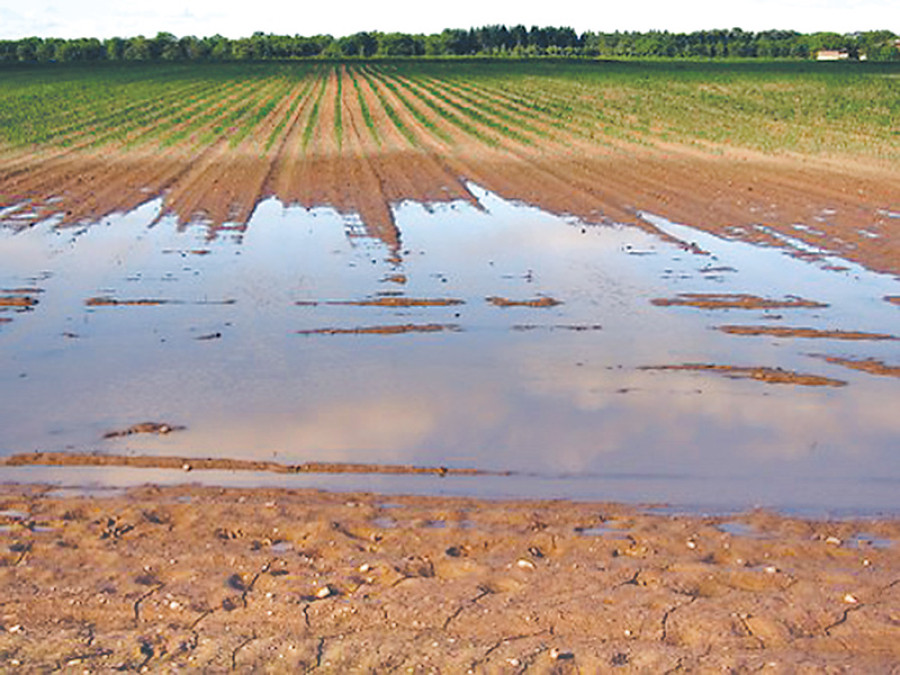Opinion
Erosion of economic base
The reality is that the high dependence on remittance will further weaken our social and economic bases
Madhukar Upadhya
While Nepal was grappling with political turmoil for the last few decades, the key social, economic and environmental sectors that sustain growth and development, which were already prompting political changes due to their abysmal state, have unwittingly slipped further into chaos. The recent revelation of the startlingly widened income gap, where the richest 10 percent own more than 26 times as much wealth as the poorest 40 percent in the country, is a manifestation of how the state has failed to address core developmental issues.
For instance, the revelation says that the top bank executives earn more than 100 times the salary of an average Nepali worker. At the expense of a growing number of poor who have become poorer and are losing access to even basic amenities with the income they make, what we are faced with now is that a small section of the rich population has become richer, allowing them to afford access to any services or resources. The impact of this skewed economic growth, which is not easy to correct in the short-term, is reflected in the intricately interconnected social and environmental spheres that will persist over generations.
Income inequality
The sharp growth of inequality seen in the last 15 years has its genesis in the root of our economy—the agriculture that provided employment for a large number of people. But an increasing number of people have given up farming. The question is why are people leaving farming? While there are many factors at play, it is the growing uncertainty associated with agriculture and declining confidence of farmers in making ends meet with the income they generate that renders farming an unreliable source of income. The widening income gap means that those with low income are forced to earn just enough from off-farm sources to support families.
Nepal, being a mountainous country, has a fragile natural environment; the recurrent impacts of the monsoon and the resulting degradation of land and water are not new. They were and will continue to be there. A review of past events reveals that the aggregate economic cost of such environmental degradation has been increasing. In monetary terms, the estimated loss has nearly doubled from 1.2 billion rupees per year between 1983 and 2005 to about Rs2.2 billion between 2010 and 2016. Floods and landslides alone (both of which often destroy crop land) cost Rs16.5 billion in seven years between 2010 and 2016.
Part of this can be explained by saying that there has been an increase in the volume of infrastructure built in vulnerable areas which led to increased losses. However, none of these circumstances explain the fact that, in 2017, flood losses were reported to be around Rs60.7 billion Our capacity to deal with these disasters and recover from the damages was not strong enough in the past and we are currently faced with more severe calamities pushing more people out of agriculture. The fact that the trend continues with increased losses is a matter of concern and even worse is that we have no plan to learn how to deal with it.
Our failure to see this interconnectedness has led us into a complex socio-environmental-economic catch, which many find unable to cope with and, while trying to escape from it, land in the labor market. The need to earn in the global labor market has weakened our capacity to produce. the villages are bereft of youths and almost half of the farms are abandoned. Farmlands, established by forefathers over centuries and managed by successive generations, especially in the hills, have turned into scrubland. This is a defining moment in more ways than one. Land and human relationship that sustained production-based food system in the past has been replaced in most cases by an import-based food system weakening that relationship. Terraces decaying, traditional ways of managing farmlands have almost been entirely lost, with no new ones to replace them.
While we boast of lowering level of poverty over the years, it has in fact come about largely due to foreign employment, which was not intended by any of the past development plans. It was a strategy people either adopted to escape poverty or were forced into by the rising cost of living (prompted by rising income inequality), which the farms could not support. Remittance is no longer a choice but a compulsion for many. The reality is that the high dependence on remittance will further weaken our social and economic bases.
Sadly, this has happened at a time when the country promised inclusive development for all. Agriculture, which employs about two-thirds of the population, is hampered by a fundamental flaw in our development policy, and that flaw is largely associated with a failure to recognise the inherent and unique characteristics of our landscape, which is ecologically vulnerable to stresses but surprisingly missing in agriculture planning.
Time to be proactive
When disasters and land degradation were taking place in the past, instead of looking for ways to manage them or deal with problems, decision-makers came up with temporary, ill-planned ideas. For instance, the strategy adopted by the then officials to address land degradation was to have people from the mountains settle in the plains. This strategy of escaping from the problem became a norm. Therefore, we have no idea how much land we have lost during recurrent natural disasters in the past six decades since the floods of 1954 that many recall as the most catastrophic in recorded history. There was no need to keep track of them, and as a result, no institution was built to reclaim lost land. No expertise fostered. It is not a failure of one plan or one policy but a failure of all our development policies of the last sixty years.
The volume of remittance, of course, eases lives, reduces poverty, raises living standards, and, above all, supports the service industry. However, it undermines the very core of the base vital for our development: the workforce. The youth today are the responsible citizens of tomorrow. Only engaged citizens help each other, organize around issues, and hold officials accountable for their actions. But when the same youth spend their prime time working for others and come home to recreate their lost social capital, it’s usually too late. This is what the early planners, while formulating strategy for development in Nepal’s first Agriculture Conference held in 1958, had concluded that “degrading natural resource base, declining soil fertility, and the rising pressure on land resources have led to deterioration of farms and farming system, resulting in migration of youth from the hills for jobs in other countries, who return home when they are old, weak and unable to work to make a living in the poor homestead.’’ Perhaps a starker commentary for our present does not exist.
Upadhya tweets at @madhukaru




 7.12°C Kathmandu
7.12°C Kathmandu











